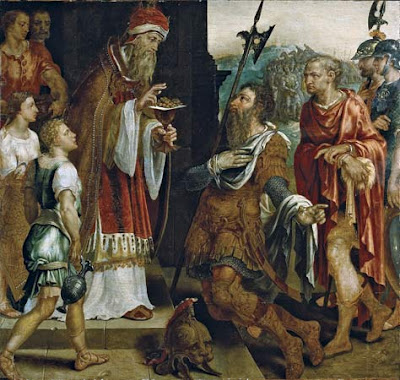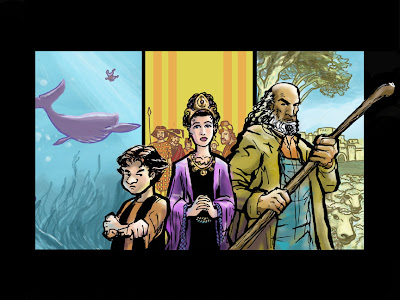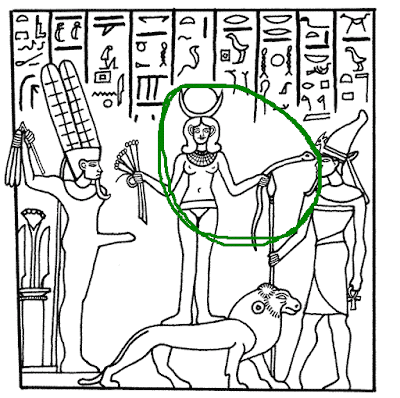
The whole family has been in Boston since Thursday noon, and already there's been so much to take in. We're on one of the top floors of the Sheraton, with a beautiful view of the back bay. It's just a short walk indoors to the convention center, where many of the meeting rooms are, and where the huge book display is located, where my new 2 Isaiah book is on display at the Abingdon booth.
Yesterday (Friday), I was in buisness meetings all afternoon. The SBL executive director, Kent Richards, reported that this 2008 conference is shaping up very nicely. The AAR (American Academy of Religion) met elsewhere (in Chicago) for the first time this year, yet even without them there are about 5,300 folks in attendance here. (N.B.: there are 9,083 members total of the SBL.) What is more, even without the AAR, the number of sessions here in Boston numbers about 600. Compare that with a combined total (inclusive of all the AAR sessions) of 697 in 1999. Amazing!

Last evening, my most recent publisher Church/Morehouse treated about twelve of us to a fun dinner at Jacob Wirth restaurant and ale house (click
here). Among the guests were Don Kraus from Oxford Press, Peter Hawkins (now back at Yale some of the time), and Barbara Brown Taylor and her husband Edmund.
This morning (Saturday) I attended a "big-questions" session on "Reading the Old Testament as Christian Scripture" (SBL 22-8). Stephen Fowl commented that the session topic might be as interesting as "discussing water as a liquid" :-), yet of course the whole problematic at stake here is much more contested and complicated than the joke might imply. I won't give you all my notes on the 2.5 hour session, but here are some sample comments on one of the issues: how is Christ the "res" or subject matter of the Old Testament? Fowl argued surely not in some hidden sense, which has to be excavated. Once we found what we were digging for, would we want to throw away the dug-up OT-context-text as "dirt"?!? Rather, the OT directs us to Christ in general and multifacted ways, argued Fowl. C. Seitz interjected at one point that we must allow the OT to speak "Christianly" in its own idiom. Peter Leithart, for his part, showed how figures such as Ruth and Boaz are already antitypes of many figures within the Old Testament on its own, so that when we see Jesus as the antitype of them within the larger, whole-Bible context, it is part of a large innerbiblical web with an amazing intricacy and logic, not some simple and arbitrary type-antitype connection. R. Reno interjected at one point that to say that the OT "refers" to Christ is a complex matter. He noted that if he "referred" a student to Aristotle, that student would have to go read Aristotle and then come back to the issue at hand to look at it anew, etc.
I can't resist mentioning one other part of the discussion. Kavin Rowe, a NT professor from Duke, presented an interesting discussion of how Jesus of Nazareth should be said to be present in the Old Testament. The incarnation happened once, in the first century, yet it is constitutive of God's identity in a way fully outside of a linear progression of time. The true God is a God whose nature it is to incarnate God's self within the creation. John 8:58 is a key text here for Rowe. Before Abraham was, Jesus is, not in some general or abstract sense, but precisely as the person we come to know as Jesus incarnate. Hippolytus was right to understand the son of God in Daniel's fiery furnace as an anticipation of the incarnation, the one destined to become incarnate. The OT presents us with the real presence of the promise of Jesus as God incarnate.
















